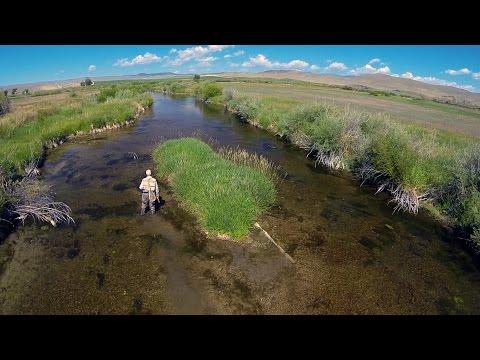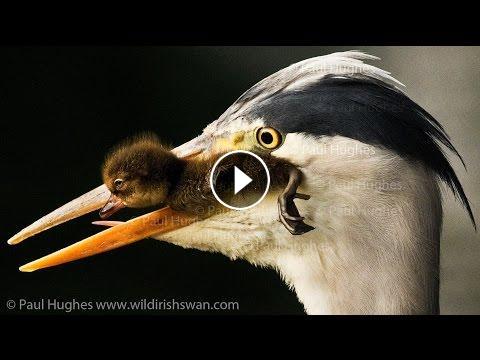Heron eat enormous birds by swallowing them whole and head first. Heron are predatory birds that attack and devour other animals. Food swallowed whole is how heron eat their meals because the heron has no teeth for chewing. The heron is a bird that has a very nutritious and a very healthy diet and a very balanced diet that will sustain and maintain the heron throughout its life. The heron is a carnivore that feeds on other animals to maintain its energy and health. Birds are also known as avian dinosaurs. Heron is a bird that is associated with wetlands and water. A heron is a predatory wading bird, they are a medium to large sized bird with long legs and a long S-shaped neck, their bill is generally long and harpoon shaped, heron are also described as long-legged freshwater and coastal birds that belong to the bird family Ardeidae. Herons can be found on all continents except Antarctica. Herons are predators that eat a wide variety of aquatic animals, heron diet also includes birds and bird eggs and baby birds and rodents and other small mammals such as rabbits and squirrels. Heron also eat baby crocodiles and baby alligators, herons will eat a wide variety of snakes and frogs and other small amphibians and even turtles. Heron catch and eat reptiles that they have hunted on swamps and marshes and in the damp jungles of the world. Snakes rap their bodies around the heron's neck and bill before the heron can exhaust the snakes and then swallow the snakes down their S-shaped necks whole. The color of the heron’s plumage will be grey, black, and white or brown depending on the species, there are 64 known species of heron. The smallest species of heron are the little bitterns which can measure less than 12 inches (30 cm) in length. The largest species of heron is the Goliath heron, which can stand up to 60 inches (152 cm) tall. Heron's size depends on the species. They can reach between 34 (85.36 cm) and 55 inches (139.7 cm) in length and weigh between 3.3 (1.5 kg) and 6.6 (3 kg) pounds.
Herons have an impressive wingspan, usually two times bigger than their body size. Wingspan of herons can reach 5.5 (1.7 meters) to 6.6 (2 meters) feet depending on the species. Heron can fly at speeds of up 30 (48k) miles per hour. Herons generally lay three to seven eggs during the breeding season, herons build their nest in high places out of the reach of most predators. Herons nest in large colonies known as heroines some of the best known heroines are in Asia, Europe and North America and they are the Florida Everglades in south Florida, of the United States, the Kaggaladu Heronry is in Karnataka state of India and then there is the Cleeve Heronry in Cleeve North Somerset UK and Hilgay Heronry in Norfolk UK. Heron chicks become independent from between 49 and 81 days, the young herons will learn to hunt and fend for themselves alone, herons are solitary birds except during the breeding season and they will defend their territories aggressively. Herons can live for up to 25 years. Heron is a bird with many different predators that differ in the countries that the heron is living in. Tigers and other large cats are known to prey on and eat herons and many attacks on herons come from animals that are drinking at watering holes such as lions and cheetahs and leopards and even hyenas. Wolves and foxes and bears will also catch and eat herons. Large Nile crocodiles will catch and eat a heron that is within its reach at the water's edge; the crocodiles will quickly grab and eat an unaware heron. Heron scientific name is Ardeidae and with the higher classification known as Pelecaniformes. Pelecaniformes is an order of medium-sized and large water birds found worldwide.
Herons have an impressive wingspan, usually two times bigger than their body size. Wingspan of herons can reach 5.5 (1.7 meters) to 6.6 (2 meters) feet depending on the species. Heron can fly at speeds of up 30 (48k) miles per hour. Herons generally lay three to seven eggs during the breeding season, herons build their nest in high places out of the reach of most predators. Herons nest in large colonies known as heroines some of the best known heroines are in Asia, Europe and North America and they are the Florida Everglades in south Florida, of the United States, the Kaggaladu Heronry is in Karnataka state of India and then there is the Cleeve Heronry in Cleeve North Somerset UK and Hilgay Heronry in Norfolk UK. Heron chicks become independent from between 49 and 81 days, the young herons will learn to hunt and fend for themselves alone, herons are solitary birds except during the breeding season and they will defend their territories aggressively. Herons can live for up to 25 years. Heron is a bird with many different predators that differ in the countries that the heron is living in. Tigers and other large cats are known to prey on and eat herons and many attacks on herons come from animals that are drinking at watering holes such as lions and cheetahs and leopards and even hyenas. Wolves and foxes and bears will also catch and eat herons. Large Nile crocodiles will catch and eat a heron that is within its reach at the water's edge; the crocodiles will quickly grab and eat an unaware heron. Heron scientific name is Ardeidae and with the higher classification known as Pelecaniformes. Pelecaniformes is an order of medium-sized and large water birds found worldwide.
- Category
- Fly Fishing




